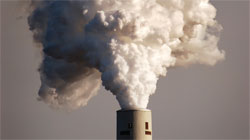A hot chase over models began soon after the Environmental Protection Agency (EPA) released draft CO2 rules June 2. Reducing CO2 (carbon-dioxide, the climate-altering pollution) in the electricity sector is not a mystery, but expecting too much from a model can be frustrating. With the CO2 rules, we have entered a new era, triggering a great clamoring amongst policymakers and advocates to get comfortable with the models. Temperatures are rising, and it is not just the hot summer weather.
This post is part of a series on the EPA Clean Power Plan.
Get to Know Your Model
Models are never perfect. Models have limits, and no model can predict the future. The EPA included lots of modelling when it put out the draft rule requiring 30% reduction in CO2 compared to 2005, but made clear these results were for illustration only. Bringing more than one model makes a better picture, as each will have features that can complement the others. These are some of the tips for understanding models provided in A Decision Maker’s Guide to Evaluating Energy Scenarios, Modeling, and Assumptions.
Last week, UCS organized a workshop by and for clean energy advocates that emphasized that models are not all the same. Models require attention to their strengths and weaknesses. You need to know what capabilities the model brings, and how to coax the model to perform. When working with any model, the audience and decision-makers must overcome the bias of that model to interpret the results. Many energy system models can calculate the fuel used, and thus the resulting carbon emissions. But there needs to be clear thinking to model the development of lower carbon energy supplies, as most models and planners have not been required to solve this problem in the past.
What Models Reveal
Taking insights from the past discussions of high renewable energy scenarios will be particularly helpful. The Decision Maker’s Guide also recommends reviewing previous studies for added value. UCS released a briefing on studies made by Independent System Operators on integration of high levels of renewable energy (10, 20, 30% wind and solar), and the CO2 reductions available from shifting the generation and transmission mix to these levels.
A particular strength of the ISOs’ renewable energy studies is the answer to the operating questions about adding reserves to address the variability of wind and solar. These detailed analyses of 20-30% added renewable energy needs 3-4% increase in reserves, and provides 30-40% reduction in CO2 emissions.
UCS has run its own analysis with the U.S. Energy Information Administration NEMS model to examine the benefits of combining a price on carbon and strong state renewable and energy efficiency standards to reduce carbon and also harmful sulfur and nitrogen emissions. These combined policies can cut power plant CO2 emissions by 50% below current (2013) levels by 2030, and 60% below the 2005 levels used by EPA.
These are really great results for states in ISO regions and elsewhere to consider. But it is fair to say that these past modeling studies are just part of the puzzle. Least-cost implementation of CO2 reductions will include energy efficiency, which is modeled differently. When you consider carbon policies that put money from carbon emissions into reducing energy use, you will need another round of modeling, with sensitivities to the inputs and assumptions. Lucky your models don’t get tired!
Where to look
What will get tiring is the blind reliance on rhetorical positions and disregard for details. Models are sensitive, and need your attention. Learn to work with the people that handle the models. Think twice before rejecting a model—it may not be quick or simple to adopt another. Understand what the model needs for inputs, and how it relates one thing to another. Working with a model to see how policies interact is not obvious from a first look. Take time to get to know your model. These little differences are really all a model has that distinguishes one from another.
Above all, don’t lose your mind when working with models. Models are tools, but they can be superficial, not even real. You are a complete human, with the ability to reason, withhold judgment, and reflect on past lessons. Models can help us form good policies if we use them wisely.
In the end, models are not all about appearances. Our policymaking on carbon can’t get sidetracked by a beauty contest.


